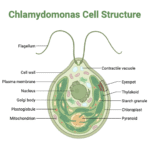In a flower, the anther plays a crucial role in the reproductive process. Here is a detailed overview of its functions:
- Pollen Production
- The anther is responsible for producing pollen grains, which are the male gametes in plants. Inside the anther, specialized structures called microsporangia (or pollen sacs) house microsporocytes. These cells undergo meiosis to produce haploid microspores, which then develop into pollen grains through mitotic divisions.
- Pollen Maturation
- The anther supports the maturation of pollen grains. Microspores inside the anther develop into pollen grains while undergoing physiological changes that prepare them for fertilization. This maturation process is essential for ensuring the pollen grains are viable and capable of fertilizing an ovule.
- Pollen Storage
- The anther stores pollen grains until they are ready to be released. The microsporangia within the anther’s lobes provide a protected environment where pollen can accumulate in substantial quantities.
- Pollen Release
- When the anther matures, it undergoes a process called dehiscence. During dehiscence, the anther splits open at specific regions known as the stomium, allowing pollen grains to be released into the environment.
- Pollen Dispersal
- The anther’s position on the flower’s filament allows it to be exposed to the environment and pollinators. This strategic placement aids in the dispersal of pollen to other flowers, facilitating cross-pollination. Pollinators, such as bees, or environmental factors like wind, assist in transferring pollen from the anther to the stigma of other flowers.




